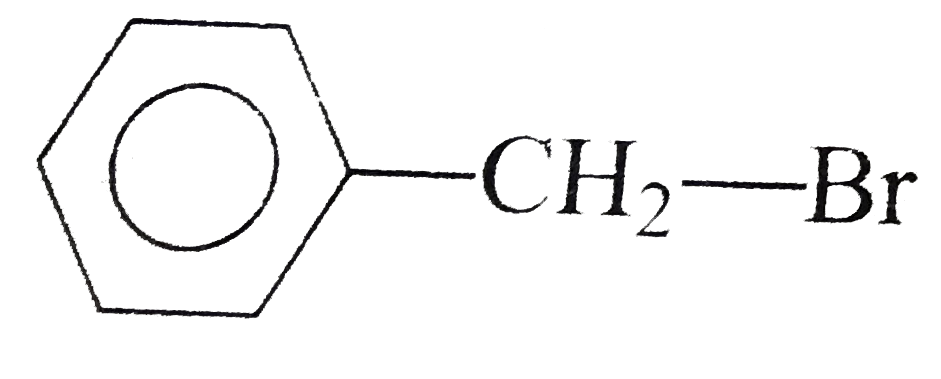Which of the following compounds will give a mixture of 1 - chlorobutane & 2 - chlorobutane on free radical chlorination ?
(CH3)2CH−CH=CH2
CH3−CH2−CH2−CH3
CH2=CH−CH=CH2
None of the above
The correct Answer is:2
To determine which compound will give a mixture of 1-chlorobutane and 2-chlorobutane upon free radical chlorination, we need to analyze the possible candidates based on their structure and the mechanism of free radical chlorination.
1. Understanding Free Radical Chlorination:
- Free radical chlorination involves the substitution of hydrogen atoms in alkanes with chlorine atoms. The process occurs in three steps: initiation, propagation, and termination.
- The key point is that the stability of the radical intermediate influences the product distribution. More stable radicals will form preferentially.
2. Identifying the Compounds:
- We need to consider the structural formulas of the given compounds. The compounds should ideally have both primary (1°) and secondary (2°) hydrogens to yield both 1-chlorobutane and 2-chlorobutane.
3. Analyzing the First Compound:
- If the first compound is a straight-chain alkane like butane (C4H10), chlorination will predominantly yield 1-chlorobutane due to the presence of only primary hydrogens.
4. Analyzing the Second Compound:
- If the second compound is 2-methylbutane (C5H12), it has both primary and secondary hydrogens. Chlorination of this compound will yield a mixture of 1-chlorobutane and 2-chlorobutane:
- The chlorine radical can attack the primary carbon (yielding 1-chlorobutane) or the secondary carbon (yielding 2-chlorobutane).
5. Analyzing the Third Compound:
- If the third compound is symmetrical (like 2,2-dimethylpropane), chlorination will yield only one type of product, as all the hydrogens are equivalent.
6. Analyzing the Fourth Compound:
- If the fourth compound is a cyclic compound or has a double bond, the chlorination will not yield both products due to the lack of sufficient primary and secondary hydrogens.
7. Conclusion:
- The compound that will yield a mixture of 1-chlorobutane and 2-chlorobutane upon free radical chlorination is the one that contains both primary and secondary hydrogens, which is 2-methylbutane (the second option).
Final Answer:
The compound that will give a mixture of 1-chlorobutane and 2-chlorobutane upon free radical chlorination is 2-methylbutane.
---
- Free radical chlorination involves the substitution of hydrogen atoms in alkanes with chlorine atoms. The process occurs in three steps: initiation, propagation, and termination.
- The key point is that the stability of the radical intermediate influences the product distribution. More stable radicals will form preferentially.
- We need to consider the structural formulas of the given compounds. The compounds should ideally have both primary (1°) and secondary (2°) hydrogens to yield both 1-chlorobutane and 2-chlorobutane.
- If the first compound is a straight-chain alkane like butane (C4H10), chlorination will predominantly yield 1-chlorobutane due to the presence of only primary hydrogens.
- If the second compound is 2-methylbutane (C5H12), it has both primary and secondary hydrogens. Chlorination of this compound will yield a mixture of 1-chlorobutane and 2-chlorobutane:
- The chlorine radical can attack the primary carbon (yielding 1-chlorobutane) or the secondary carbon (yielding 2-chlorobutane).
- If the third compound is symmetrical (like 2,2-dimethylpropane), chlorination will yield only one type of product, as all the hydrogens are equivalent.
- If the fourth compound is a cyclic compound or has a double bond, the chlorination will not yield both products due to the lack of sufficient primary and secondary hydrogens.
- The compound that will yield a mixture of 1-chlorobutane and 2-chlorobutane upon free radical chlorination is the one that contains both primary and secondary hydrogens, which is 2-methylbutane (the second option).
The compound that will give a mixture of 1-chlorobutane and 2-chlorobutane upon free radical chlorination is 2-methylbutane.
Similar Questions
Knowledge Check
Which of the following organic compounds will give a maxiture of 1-chlorobutane and 2-chlorobutance on chlorintaion
ACH3−C∣CH3H−CH=CH2BHC=C−H∣C=CH2CCH2=CH−CH=CH2DCH2=CH−CH2−CH3Which of the following compounds will give racemic mixture by SN1 reaction?
A B
B C
C DH3C−CH∣CH2−Br−CH3
DH3C−CH∣CH2−Br−CH3Which of the following compounds gives a mixture of SO2 and SO3 on heating ?
AZnSO4BFe2(SO4)3CFeSO4DCaSO4
Which of the following reacts with free radical ?
View SolutionWhich of the following isomeric heptanes can yield seven differentt monochlorinated products upon free radical chlorination?
View SolutionWhich of the following compound can give only one monochlorinated product upon free radical chlorination?
View SolutionWhich of the following is not a free radical ?
View SolutionWhich of the following compounds can yield only one monochlorinated product upon free radical chlorination?
View Solution

